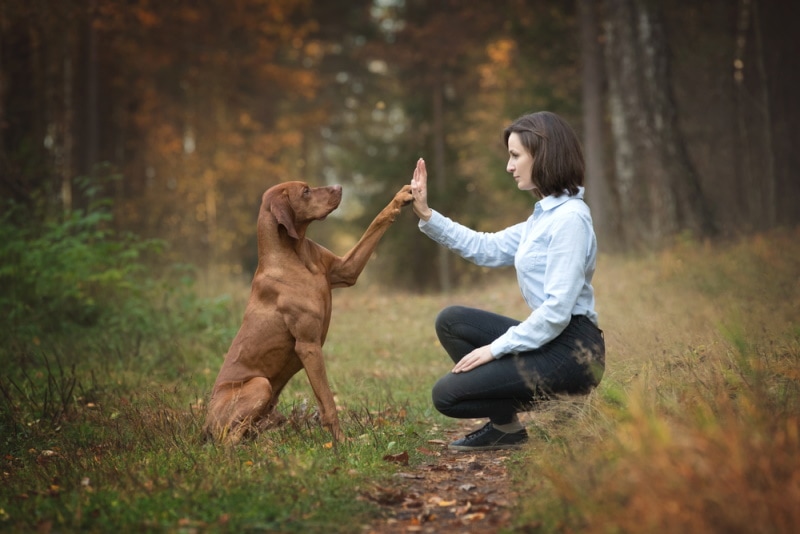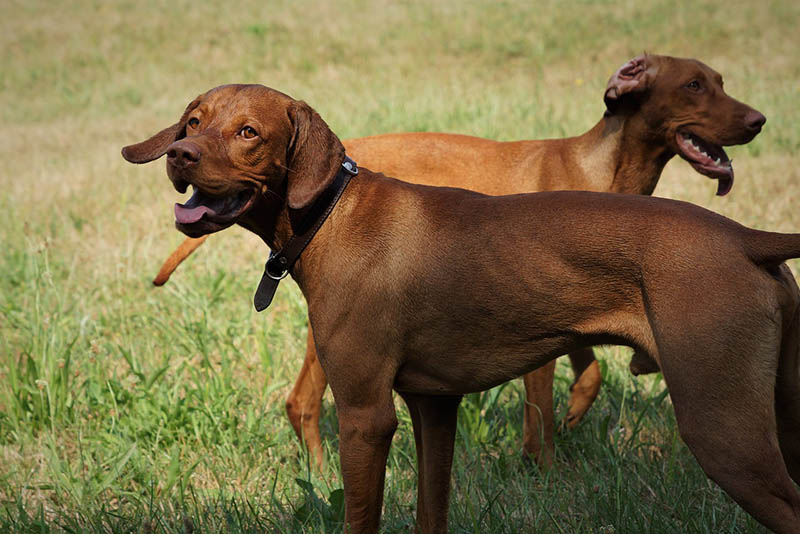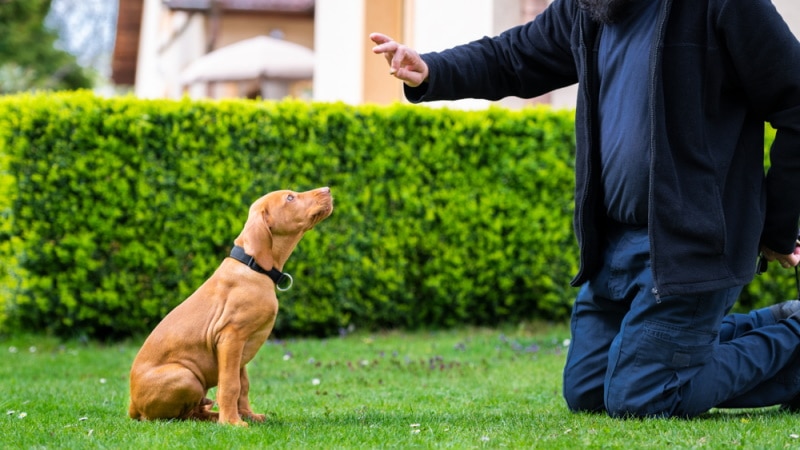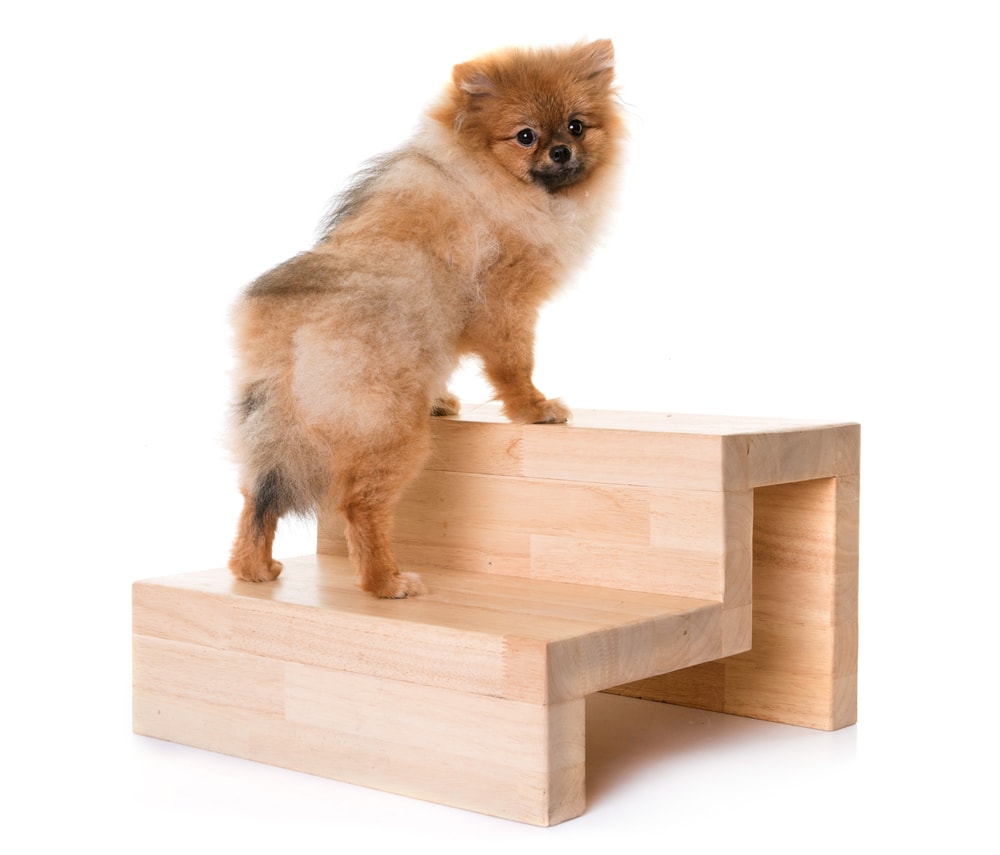How to Train a Vizsla – 4 Easy & Helpful Expert Tips
Updated on

The Vizsla is a dedicated and driven Hungarian hunting dog who coincidentally makes a great family dog. Whether you’re training them to hunt or not, proper socialization, routine, and training from a young age are crucial to making a well-adjusted Vizsla. Let’s help you along the way with some handy tips for Vizsla training. Read on for the details.
How to Train a Vizsla
1. Routine, Routine, Routine
All dogs thrive on routine, and you need to establish this from day one. First, take your new Vizsla where you expect them to eliminate and let them get familiar with the area. If they go potty, heavily reward the pup with praise and a treat.
Keep doing this every time they need a potty break and you’ll have them housetrained in no time. Another important thing is to call your pup by their name all the time, which helps them learn it faster.
Routine also goes for mealtimes and exercise. Intelligent dogs like Vizslas quickly learn exactly when they get fed and playtime, and a schedule will help keep them calm too. If you give them structure, they know what to expect and feel more secure in their growing bond with you. This helps speed up obedience training as well.

2. Managing the Vizsla’s Hunting Drive
The Vizsla has a very strong prey drive from a young age, owing to their long hunting bloodline. To successfully control and harness this instinct, you have to set strict boundaries on what your Vizsla can chase outdoors—rabbits, squirrels, and other small prey animals. If you’re training the Vizsla to hunt, this goes hand in hand with general hunting and obedience.
Prey drive can also affect the Vizsla’s relationship with kids. Small kids make more high-pitched noises that can sound like screaming prey to your Vizsla’s carefully tuned ears. Keeping an eye on Vizslas in training around kids is a good policy. Always reward calm behavior and ignore negative behavior.

3. Crate Training
Crate training is a great idea for any dog, but it’s essential when training a Vizsla to be a hunting dog or family dog. They need to be calm when going to the field and back home, and they typically sleep in their crates during hunting trips too.
Introduce your Vizsla to their crate by liberally attaching positive things to it. Leave the door open and start by having them sniff around. It’s a good idea to throw a treat in there, too, to show them it’s a good place. Comfortable bedding is up to you, but sometimes dogs shred bedding.

4. Obedience Training
Obedience isn’t terribly difficult with Vizslas because they’re bright and eager to please. The bad news is they can be stubborn, so patience is required. Vizslas respond very poorly to yelling and other harsh discipline methods, so only use positive reinforcement methods—they’re more humane and just nicer overall.
The first and most essential commands are no, come, stay, and heel. These are necessary to keep your Vizsla safe during potentially dangerous situations, so don’t slack! Start with bite-sized training sessions, 10 to 15 minutes at a time.
Once a day is fine in the beginning, but slowly ramp it up and see if your dog can handle it. If not, scale the training back until your pup is comfortable. It’s all about taking things at their pace so they develop a strong bond with you and learn basic obedience at the same time.

Conclusion
Vizslas are smart, loyal, and affectionate hunting dogs that are easily converted into family dogs. Managing their prey drive will take some patience if you have kids, but obedience and other training should go smoothly if you stay consistent.
Featured Image Credit: Osetrik, Shutterstock










